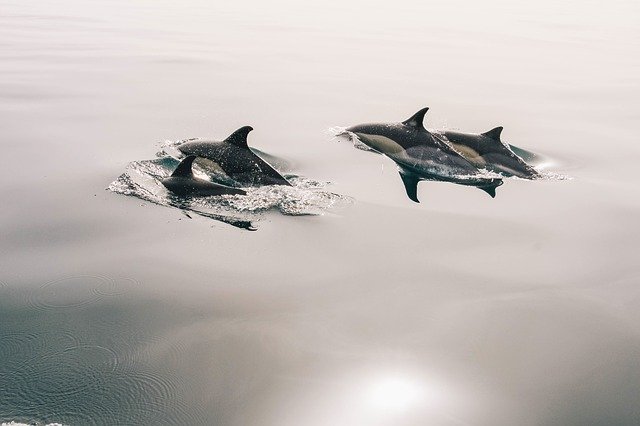A team of American scientists has analyzed the almost complete skeleton of a dolphin ancestor that lived during the Oligocene epoch, about 25 million years ago. Their research helps to better understand how two modern orders of cetaceans ended up sharing common characteristics: the fins and the tail propulsion.
This skeleton, about 4.8 meters long, belonged to the Ankylorhiza tiedemani species, considered the first predator with an echolocation apex. In addition to being large, this sea dweller may have had enormous tusks and appears to have been able to hunt its prey, developing high speeds in a manner similar to that of modern killer whales.
Many aspects of its skeleton – the shape of the skull, the shape of the tail, and the shape of the teeth – suggest that the two modern orders of whales: odontocetes and mysticetes, evolved many features in parallel and independently of each other, instead of inheriting them from a common ancestor as previously thought.
Although it sounds obvious that animals that live in the same environment can develop similar characteristics, this is not a mandatory pattern in nature. It is not a secret that different types of seals and sea lions develop their own way of swimming and end up forming very different postcranial skeletons.
It was even known that the baleen whales (mysticetes) had come to adopt the swimming styles of dolphins, which surprised palaeontologists.
“It is as if the incorporation of additional finger bones into the fin and blocking of the elbow joint has forced both major groups of cetaceans to follow a similar evolution path in terms of locomotion,” noted scientist Robert Boessenecker of the College of Charleston.
What makes this research of particular interest to scientists is that no one could imagine to date that modern killer whale and orca species were so closely related to each other. Also, Ankylorhiza probably would have fed tens of millions of years ago in much the same way as today’s killer whale.
“Whales and dolphins have a complicated and long history of evolution and, at first glance, this impression may not be found in modern species. The fossil record has shed light on this long and winding evolutionary path, and fossils like Ankylorhiza’s help to understand how this evolution happened,” Boessenecker summarized.
